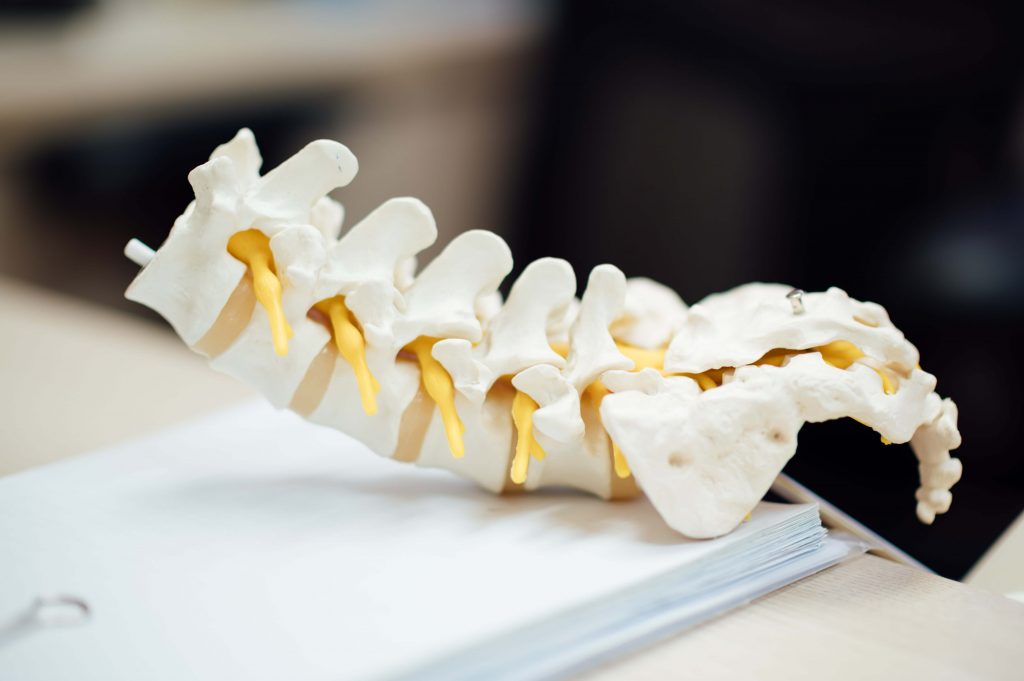If you’re an adult over the age of 18, the odds are that you most likely have annular tears in your spinal discs. Annular tears develop in just about everyone because they’re a natural part of aging. Because of this, they don’t always cause any symptoms or pain. However, for some people, annular tears will lead to debilitating back or neck pain that may affect their quality of life. This is why it’s no surprise that anyone suffering from pain caused by these tears is in search of the most effective annular tear treatment.
Acute vs. Chronic Pain
Pain caused by annular tears can either be acute or chronic. It’s important to be aware of the difference between these types of pain in order to determine what kind of annular tear treatment you need.
It’s very easy to tell the difference between acute and chronic pain. If your pain lasts longer than 6 months, it can be classified as chronic pain. This 6-month dividing line between acute and chronic pain is important because once the sixth month of pain is reached, it is unlikely that symptoms will improve on their own, and after this point, the pain needs to be treated or it will continue indefinitely.
However, acute pain starts quickly and goes away on its own. It’s usually caused by a specific event, such as an injury. It typically won’t last longer than 6 months.
Chronic pain puts stress on the body and can lead to other physical and mental conditions like:
- Tense muscles
- Limited ability to move around
- A lack of energy
- Appetite changes
- Depression
- Anger
- Anxiety
For these and other reasons, such as the potential worsening of your pain, it’s important to get chronic pain treated as soon as possible. If you’re suffering from annular tears that are causing chronic pain, it’s time to find a solution.

Annular Tear Treatment
Conservative treatment is the most commonly recommended annular treatment. These treatments are intended to reduce inflammation and address the pain annular tears can cause, but this doesn’t solve the underlying issue. Here are the most common treatments for annular tears:
Anti-inflammatory medications. These medications are generally prescribed to decrease inflammation that is caused by leaking spinal discs, and although they may successfully treat inflammation, they cannot treat annular tears. Because of this, the spinal disc will continue to leak and continue causing inflammation. In addition to being unable to treat the annular tears, these medications can also damage the kidneys and stomach.
Pain medications. Like anti-inflammatory medications, pain medications may treat the pain caused as a result of annular tears, but they cannot treat the tears themselves. Because of this, they can require long-term use, leading to dependency. In some cases, pain medications can even lose their effect over time.
Steroid Injections. This is another treatment that is unable to treat annular tears and heal them in any way, but in addition to this, the FDA warned against the use of epidural steroid injections for low back pain in 2018.
Physical Therapy Programs. While these programs are able to teach proper body mechanics, they cannot heal annular tears or regrow disc tissue, making physical therapy unable to treat annular tears and the pain caused by them.
Low-Impact Exercise. Low-impact exercise can be helpful in alleviating back pain, but if done incorrectly can actually cause further damage to spinal discs. When exercising, avoid bending forward or twisting, as these movements are the main cause of disc tearing. However, while remaining active is healthy for your back, exercise cannot treat annular tears, making it only a temporary solution.
It’s important to note that conservative treatments have not been shown to resolve pain caused by annular tears.
The Discseel® Procedure – The Most Effective Annular Tear Treatment
Why aren’t these common treatments effective annular tear treatment? This is because annular tears cause pain when the tears allow the nucleus pulposus to leak out of the disc. The nucleus pulposus then comes into contact with the annulus fibrosus, the outer portion of the disc, as well as nerve roots and other tissue, leading to inflammation and irritation. The irritation of these nerves can even cause pain to be felt in areas outside of your neck and back, such as your head, arms, hands, legs, and feet. The only way to stop this pain is by sealing these tears and encouraging them to heal.
The Discseel Procedure is a non-surgical and minimally invasive annular tear treatment shown to heal spinal discs damaged by annular tears. In addition to this, recovery from this procedure is quick and easy. You’ll be able to return home or to your hotel after the procedure and many patients are able to begin walking within 24 hours! After your procedure, your spinal disc will continue to heal over 3-12 months and you will be able to increase your activity level little by little until you reach your desired level.
If you have back or neck pain that has failed to be relieved by other conservative treatments, it’s time to apply for the Discseel Procedure. Find out if you’re a candidate and start your journey toward living without pain.


